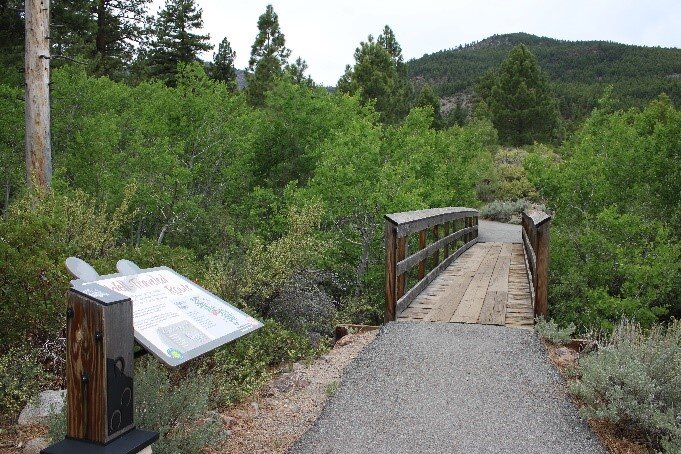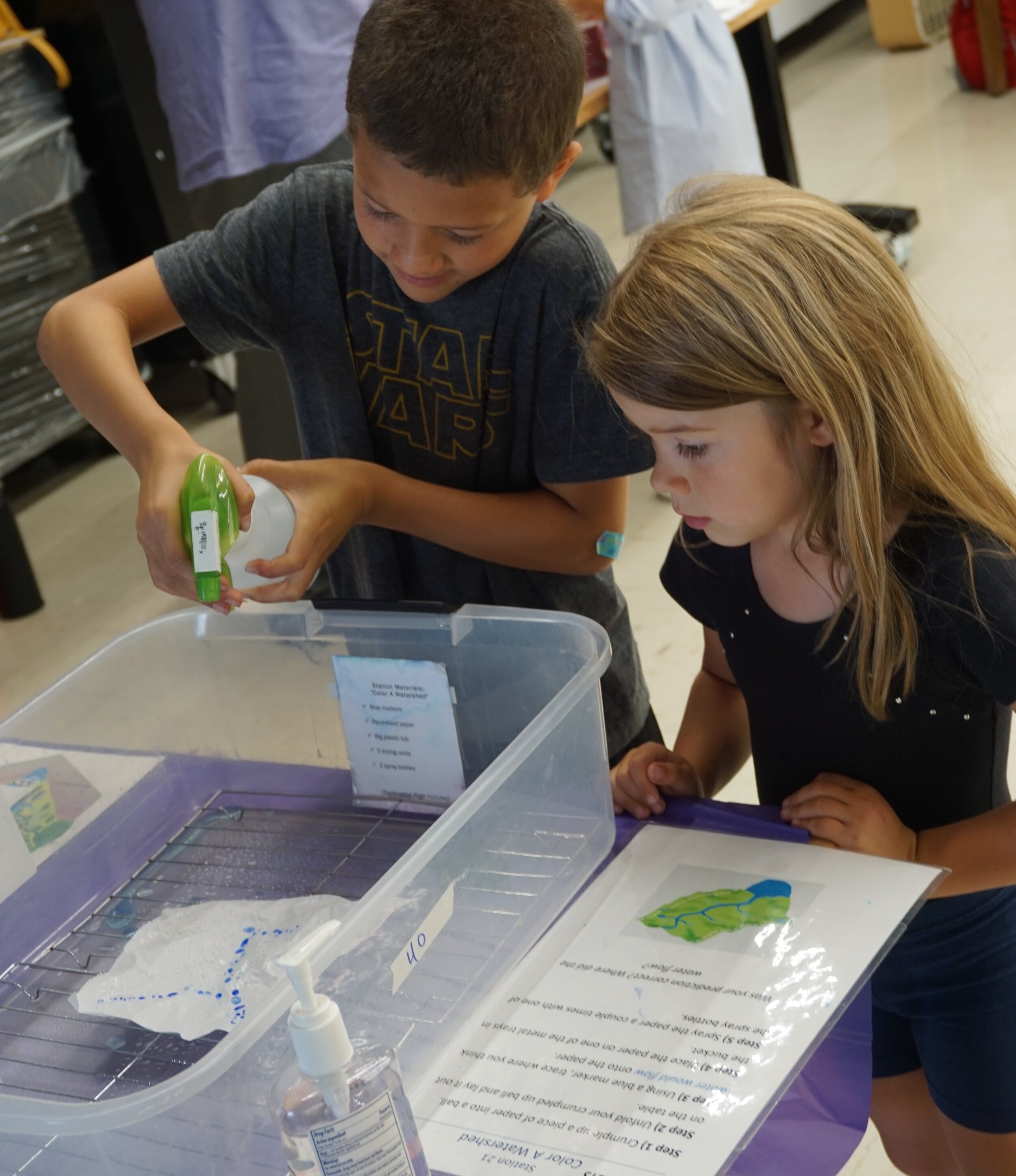Galena Creek Recreation Area in Reno, Nevada, is one of Sierra Nevada Journeys’ field sites for Classrooms Unleashed and the Our Amazing Earth series, which is designed for fourth grade students. The rugged terrain of boulders, mountains and forest make it the ideal location for students to take the lessons they learned — the different types of weathering, the effects of erosion and how the two natural processes work together to shape the earth – for firsthand exploration.
“Galena Creek, was a bit more isolated compared to some of our other field sites and it sits at a higher elevation so be prepared for weather conditions; there could still be snow on the ground in early spring,” says Vardan Kirakosyan, outdoor instructor with Sierra Nevada Journeys. “It is enjoyable to have a quiet experience at Galena Creek as it lets me use more of my senses to connect with the forest around me. I recommend reading the signs at every trailhead; it often gives you such important information and is always worth the time even though we are all excited to get started with our hike,” added Vardan.
Vardan suggested starting with the Visitor Center Interpretive Trail; it is a small loop (0.4 miles) near the parking lot because it is one of the most accessible trails. “I wanted to share an experience that everyone can do! The trail starts with a short walk that then approaches a small bridge. This is a great place to take a moment and stop to make some observations. All animals need water to survive so take a moment to use all your senses to observe. After crossing the bridge, you are faced with a choice, left or right. I prefer going right and experiencing the loop in that direction, but you will see the same things either way,” says Vardan.
He added, “You might notice that some of the birds are different from the ones you normally see in town. That’s because you are at a higher elevation and different species prefer different environments in which to live. I also saw that the squirrels were different, much smaller, and spent their time in the bushes instead of the trees. It is a good idea to compare the animals and plants you see here to the ones you normally see in the city to practice your observation skills.”
Angie Anavisca-Valles, Community Outreach Specialist, Anthem Blue Cross and Blue Shield, knows a thing or two about stress, but more importantly, about ways to reduce stress.
“At Anthem, we work with a variety of populations in supporting their health and wellbeing. This past year has been particularly hard some families, both physically and mentally. When we learned about Sierra Nevada Journeys, we wanted to support their programs,” says Anavisca-Valles. “Stress affects everyone and some of the best ways to manage stress is observing your body’s response to stress such as difficulty sleeping, feeling agitated or lack of energy. Sometimes little steps like getting regular exercise, exploring outdoors and observing the wonders of nature can make a difference.”
At the end of your hike at Galena Creek, try to think about the different plants and animals you observed. Make it a goal to remember some of the characteristics of a new animals that you saw and then go and find the name of it by searching the internet or books at the library. Sierra Nevada Journeys’ educators encourage bringing along a journal on your hikes to write down the colors and shape of birds, plants and other wildlife that you saw on your hike.
Nature journaling is one of the many tools used in Sierra Nevada Journeys’ style of teaching youth about environmental science. It starts with asking yourself a few basic thoughts when observing your surroundings: I notice, I wonder, and it reminds me of. From there, you can sketch pictures of what they see, write thoughts about your experiences and discoveries. Many find it as a meaningful way to learn and reduce stress.
We look forward to getting kids outside through student field trips. Contact Alyssa Wagner to book Classrooms Unleashed or a Family STEM Night program.
Directions to Galena Creek Recreation Area:
Galena Creek Regional Area (south entrance) is located at 18250 Mt Rose Hwy, Reno, NV 89511. Learn more about Galena Creek. We encourage you to take a guided hike if you are not familiar with the area.
Sierra Nevada Journeys' Classrooms Unleashed: Designed by credentialed teachers to be inquiry-driven, hands-on, student centered, and highly engaging. Our programs are aligned to Next Generation Science Standards (NGSS) and Common Core. Program fees are based on a sliding scale to meet the needs of all schools. Classrooms Unleashed programs include in-class lessons taught by Sierra Nevada Journeys educators and classroom teachers, an outdoor science field study at a local nature site and extension lessons for teachers for before and after our program. We also administer pre- and post-assessments for your students. We work with teachers to meet their classroom’s individual needs.
Family STEM Nights: They are a fantastic way to bring families together for an evening of fun. Experience the wonder of science and solve a variety of STEM challenges. Family STEM Nights are a great way to build community and engage students and their families.


















































